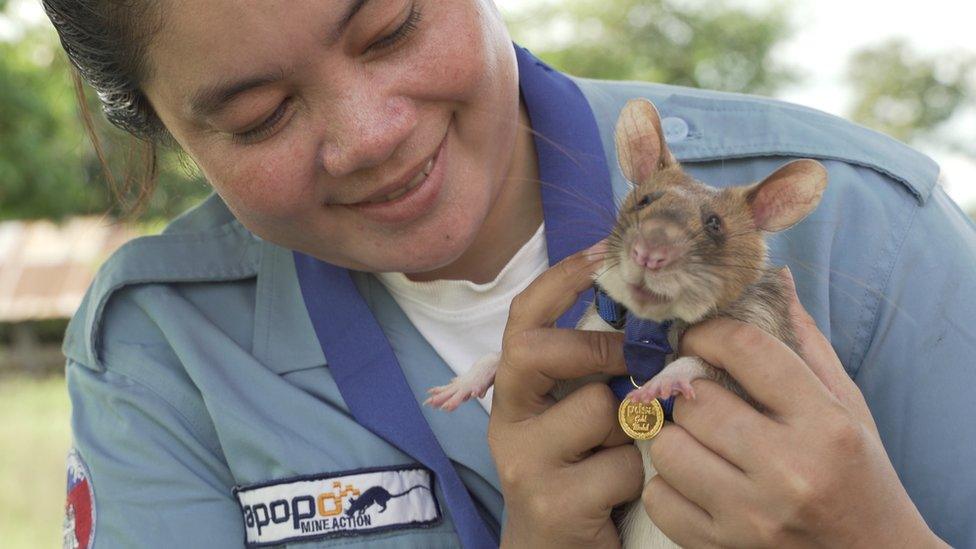Winkie the WWII hero pigeon given statue in UK
- Published
- comments
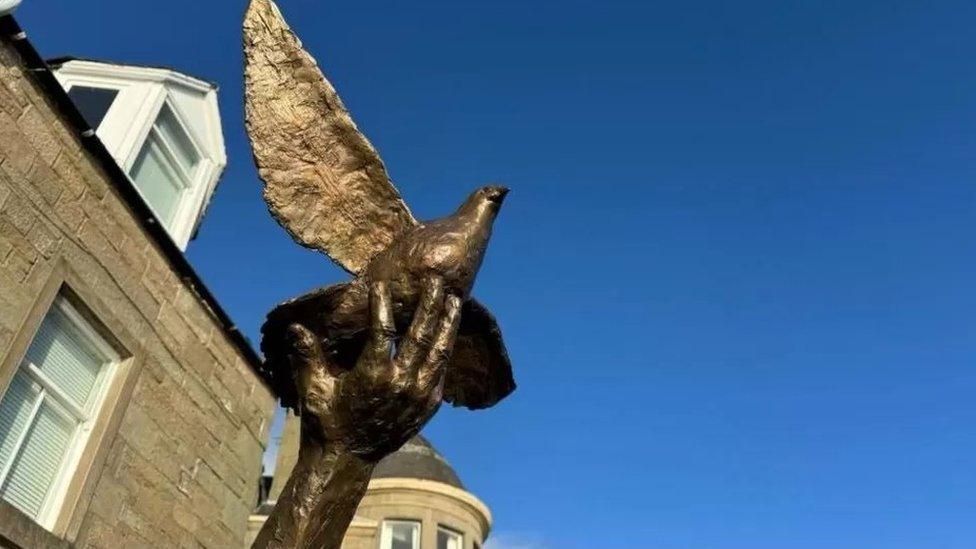
A statue has been built to honor a heroic pigeon
A statue of a heroic pigeon has been unveiled in Dundee.
Winkie the pigeon became a bit of a hero in 1942 during World War II, after helping to rescue the crew of a Royal Air Force plane that had gone down in the sea.
She was one of the first animals to be awarded the PDSA Dickin medal - the highest award any animal can receive whilst serving in military conflict - also known as the animals' Victoria Cross.
The medal is awarded to animals who have displayed outstanding acts of bravery or devotion to duty while serving with the military.
The bronze statue of Winkie has been built beside the River Tay.
What's Winkie's story?

Winkie the pigeon was stuffed after she passed away, and is on display in Dundee's McManus art gallery and museum
During World War II, on 23 February 1942 the crew of an RAF Beaufort bomber plane were returning from a mission in Norway.
The plane was badly damaged after being hit by enemy fire and crashed into the freezing cold waters of the North Sea, around 120 miles away from the UK shores.
Back then location services like satellites and GPS didn't exist, and the crew were unable to use their radio, so they sent Winkie off to fly to her home near Dundee in the hopes that she would alert their colleagues at the airbase.
Around 250,000 homing pigeons were used during World War II to help deliver messages between soldiers, because of their speed and agility.

Winkie received her award from Maria Dickin CBE, founder of the animal charity People's Dispensary for Sick Animals (PDSA). She came up with the idea of the medal to honour animals who show outstanding service during war
Winkie managed to make it home, and arrived covered in oil and exhausted after flying more than 120 miles. Her owner George Ross then contacted the RAF Leuchars base in Fife.
Even though Winkie was not carrying a message, the RAF were able to work out where the plane had landed by working out the time difference between the aircraft's last known location and the arrival of Winkie, taking into account wind and the impact of the oil on her feathers.
They immediately launched a rescue mission and quickly found the soldiers floating in the water within 15 minutes.
Take a look at some of these other statues devoted to heroic animals in the UK...
Animals in War Memorial
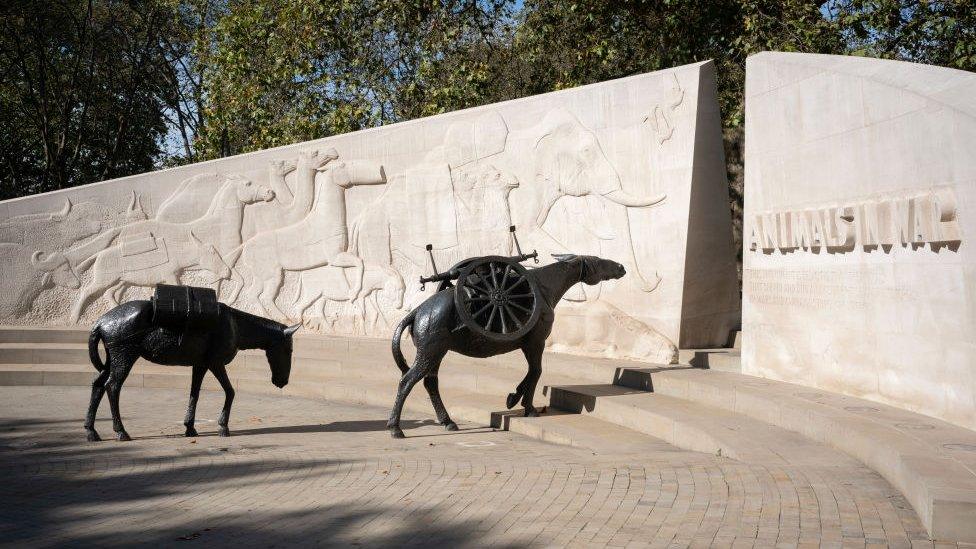
Unveiled in 2004, the monument in Park Lane, London, pays tribute to 60 of the animals who have been awarded the Dickin medal.
It was designed by sculptor David Backhouse to honour all animals that have been used in war, including horses, mules, dogs, dolphins, elephants, pigeons and even glow worms.
38 dogs, 32 pigeons, four horses and one cat have received the Dickin award for their bravery since it was first introduced in 1943 by Maria Dickin CBE.
Khan the dog
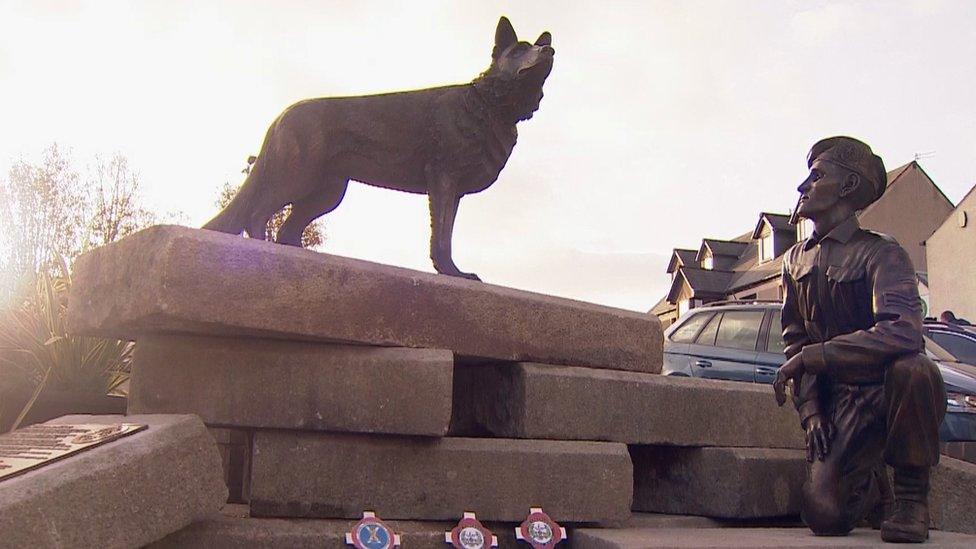
The bronze statue was created by sculpter John McKenna
A bronze statue of Khan the German Shepherd was unveiled in 2021 in South Lanarkshire.
The dog was awarded a Dickin medal for helping to save the life of a soldier in 1944 by pulling him out of the sea during the Battle of the Scheldt in World War II.
A statue of his handler, Lance Corporeal Jimmy Muldoon - the man Khan saved - has also been built beside Khan.
Treo the dog
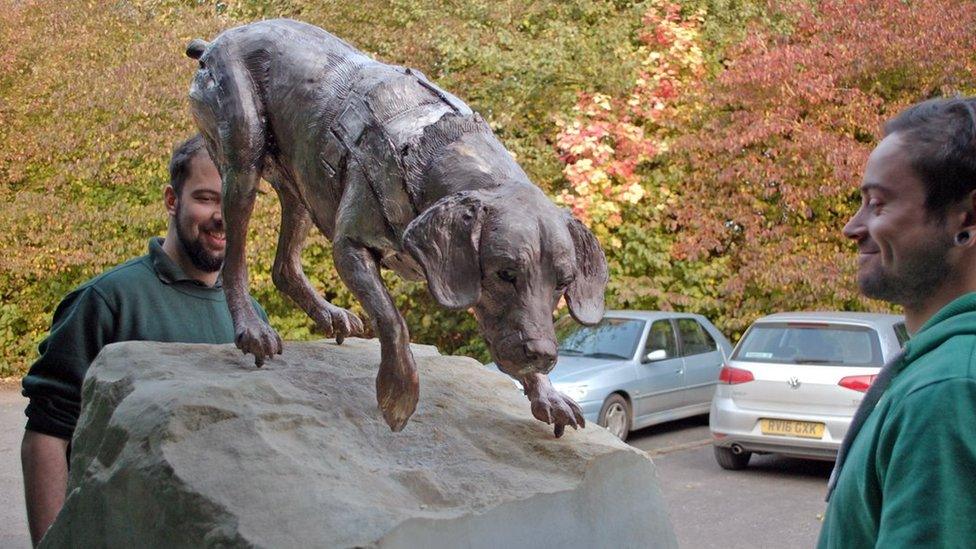
The statue of Treo was sculpted by Amy Goodman.
This statue of Treo the Labrador was revealed in 2017 in Congleton, as a tribute to the heroic pup.
He was part of a team of 25 dogs sent to the Helmand Province in Afghanistan in 2008, whose job it was to help sniff out explosives that could potentially harm lots of people.
Treo and his handler found many explosives and saved lots of peoples lives, and in 2010, Treo was awarded a Dickin medal for his heroic efforts.
- Published18 February 2020
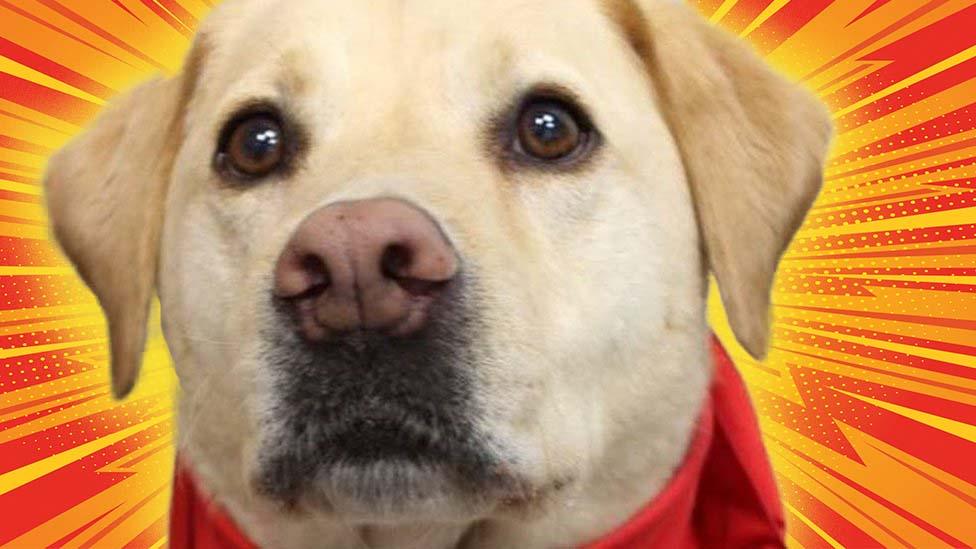
- Published22 June 2015
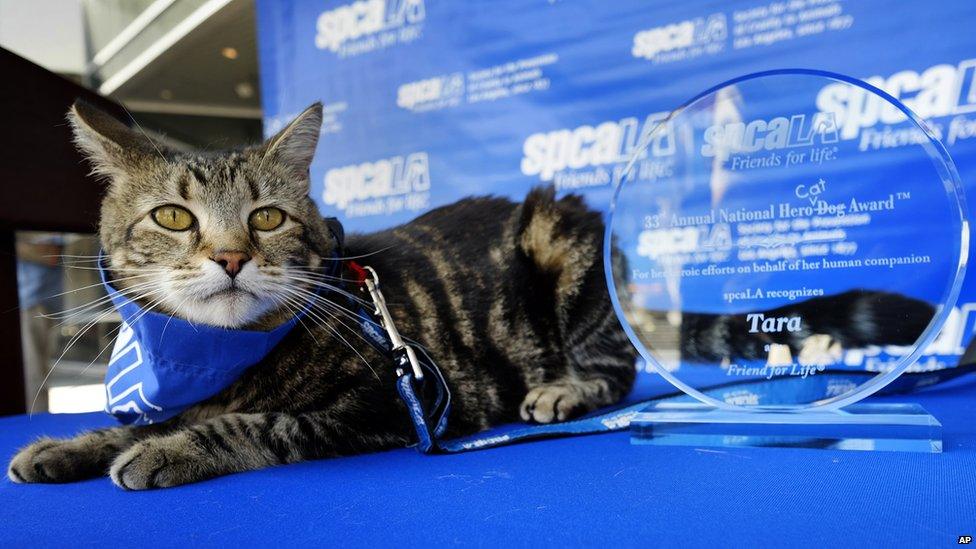
- Published25 September 2020
